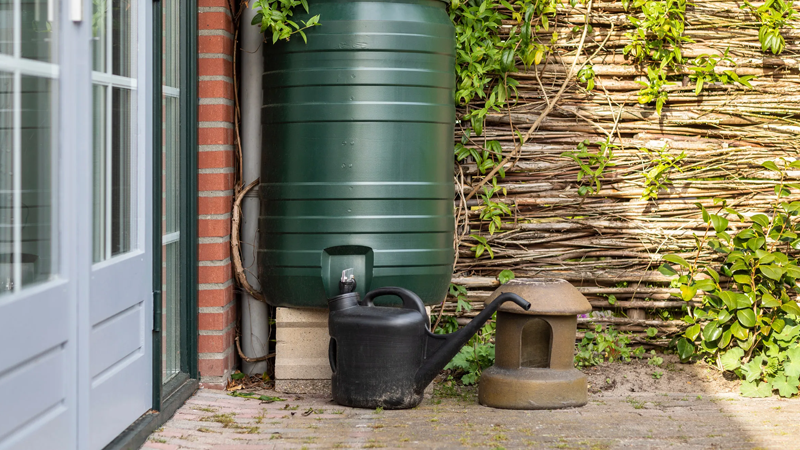Get your garden ready for spring this autumn
Posted: 16 October 2025
Summer may have been and gone, but that doesn’t mean you have to retreat from spending time in your garden.
 A water butt and a watering can in the garden
A water butt and a watering can in the garden
Whilst it may feel cooler and crisper, spending a bit of time in the garden doing some small maintenance jobs won’t only keep you active, it will improve your wellbeing, and you can use these autumn months to create a garden that is more resilient to dry weather.
Here are five things you can do to get your garden ready for spring.
Mulch your flowerbeds
Protect your flowerbeds from the incoming winter frost and improve the quality of your soil by adding a layer of mulch.
This can be made up of garden compost, wood chippings, manure or leaf mould. All of these materials can help suppress weeds and increase water retention, meaning your plants will make better use of any water in future months.
A layer of 2-3 inches is recommended, leaving space around the woody stems of plants.
Plant perennials and spring bulbs
Autumn is the best time to plant perennials like lavender and hostas. The cooler temperatures and regular moisture allow their roots to establish effectively and planting them now gives them a head start for spring.
Spring bulbs can also be planted in pots or in your flower borders throughout autumn. October and November are good times to plant tulips.
Capture water in a water butt
After the hot, dry spring and summer we’ve had this year, having the ability to store much-needed rain is particularly beneficial for those who like to potter around in their gardens.
Much of the water we use in the garden is clean, drinkable tap water, and when there’s pressure on our water supplies, our reliance on tap water can affect ecosystems that share this water source, including rivers.
The average roof collects 85,000 litres of rain a year, which could fill five 200-litre water butt 85 times across the year. Rainwater is full of nutrients and therefore brilliant for our gardens.
Water butts can be bought online and from most DIY stores and can be installed easily next to a gutter downpipe by your house, greenhouse or shed.
Aerate your lawn
Improve the health of your lawn with aeration. Doing this will allow the soil underneath to get the water and essential nutrients it needs.
It’s easy to do. Pick a dry day, ideally after a day or two of rain, and use a garden fork to dig holes (no more than five inches deep), six inches apart.
You can even buy aerator shoes - these are soles with straps and metal spikes that you wear on your feet, allowing you to aerate by simply walking across the lawn.
By poking holes into the turf, you’re allowing more air and water to circulate through the soil and reach the roots.
Water early in the morning or late in the evening
Usually at this point of the year, we see a lot more rainfall, but when it is dry and you need to water your plants, the best time to water your plants is first thing in the morning, or late in the evening to minimise evaporation on warmer days.
If you have installed a water butt, this is a great opportunity to make use of any captured rainwater.

